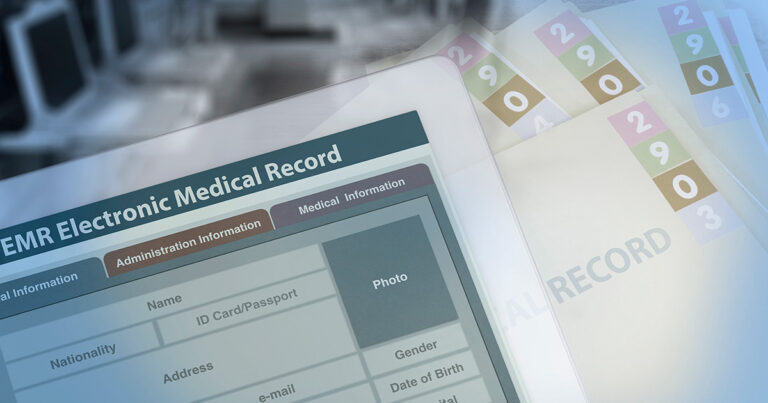What patients are looking for now in a healthcare practice
In 2020, patients have unprecedented power as consumers. Mobile technology, searchability, and review sites have enabled potential patients to shop around more than ever before. Some patients are looking for providers to meet new medical needs. Others are looking for providers to replace their current practitioners, with whom they’ve been disappointed or dissatisfied for whatever reason.
In any case, healthcare practices need to step up their game to meet this growing shift in patient autonomy and power. They need to create a patient-centric experience that delivers on both high-quality care and patient-friendly administrative processes. They need to focus on developing relationships with current and prospective patients. And they need to be equipped with tools that will help them grow and expand.
In this article, we’ll take a look at some of the qualities, features, and resources of a healthcare practice that can effectively meet the needs–and even exceed the expectations–of patients in 2020.
Digital accessibility
Your patients use their mobile phones and laptop computers to do just about everything: grocery shop, manage their finances, invest in the stock market, and monitor their heart rate, “steps,” and sleep patterns. They expect instant accessibility and convenience for just about everything–including their relationship with healthcare providers.
In 2020, your administrative processes should be internet-accessible and mobile-optimized–meeting the needs of a smartphone-wielding patient population. It’s even true among the older demographic: 79% of people aged 50-64 own a smartphone, and over half of all people aged 65 and over own a smartphone.
Part of creating a practice that is digitally accessible and technologically up-to-date is using electronic forms and medical records (EMR or EHR) in place of paper forms. Electronic intake forms, for example, significantly expedite the patient on-boarding experience, reduce administrative burden, and create a great first impression on first-time patients.
Instead of mailing new patients a packet of intake forms, to be filled out by hand and brought into the office on the first appointment, new visitors can fill out forms online (even on their phones), click “send” and be done with it.
Healthcare practices also benefit from an electronic on-boarding process for several reasons. First, electronic forms give providers an opportunity to prepare for appointments with critical information well before an appointment. Second, they reduce administrative burden: Forms are instantly (and securely) sent and stored without needing to shuffle papers or scan and digitize paper forms.
Clear, effective communication
Clear, effective communication is critical to running a healthcare practice with high retention and patient satisfaction. Too often, patients churn not because they haven’t received satisfactory care, but because they became fed up with poor communication and administration.
In fact, 77% of patients say that quality customer support is “very important” to their healthcare experience–indicating that qualities like efficient scheduling and friendly staff are high on their priority list when looking for providers.
In 2020, commit to clearer, more effective communication with the following:
- Online scheduling. If you haven’t already, shift to using an online booking widget to schedule, confirm, and cancel appointments. Patients will appreciate the ability to schedule and check their appointments without having to make a phone call. Your administrative staff will be relieved of the significant burden of making and receiving phone calls all day. Finally, online booking creates a far more streamlined, efficient, and accurate process for appointments–while potentially reducing costly no-shows.
- Patient portals. Giving every patient access to their own individualized patient profile provides them with critical information and even reduces the need for patient-provider back-and-forth.
- Staff training. Finally, you may want to train your front-of-office staff on best practices for communicating with patients. Patients are looking for a warm, friendly experience when they walk into your practice. They want to be welcomed and equipped to succeed in their health journey–not ignored or shuffled around.
Personability & transparency
They want to be heard and understood, given the opportunity to ask questions, looked in the eye, and cared for on an individual basis.
Likewise, they’re looking for transparency: to know the values and mission of a practice; to be able to conveniently access their own information; and to be informed and equipped on their journey to better health.
As described above, digitizing processes in your practice can actually create more room for both of these qualities in the following ways:
- Electronic intake forms more adequately prepare providers for appointments–potentially resulting in a more personalized (and fruitful) appointment. Providers may come prepared with informed insights or questions regarding the patient’s particular circumstance, and patients feel “understood” before even entering the appointment.
- Private messaging, often enabled by an electronic forms system, gives patients the ability to securely message their providers with quick questions and updates. Providers can respond on their own time using the same application or system.
- A patient portal, as referenced above, creates a sense of transparency for your patients. Logging into their profile, they can quickly access appointment notes and other important information.
Finally, customizing your content–such as your electronic intake forms – to reflect your practice’s mission and values lets your patients know who you are, what you stand for, and how you’re going to meet their needs.
A more holistic approach
In 2020, patients are looking for healthcare practitioners who take a more holistic approach to caring for patients. This doesn’t suggest providers need to dive into holistic medicine per se; it simply means that patients are wanting to develop an approach to their health that takes into account lifestyle, social needs, and more.
In fact, a recent survey conducted by major healthcare provider Kaiser Permanente found that 97% of patients felt that providers should ask about their social needs (including access to food and balanced meals) during an appointment.
Other than showing concern that a patient’s basic needs are met, healthcare providers may also want to ask about a patient’s level of stress, eating habits, sleep, and social relationships–regardless of the kind of care they are providing. Ultimately, showing this kind of holistic concern shows patients a level of care and investment that builds powerful, long-term relationships.
Looking to identify your priorities for the next year? Download our free guide.
Making a change with intakeQ
If you’d like to shift your focus onto more patient-centered care in 2020, you need to be equipped with the right tools and strategies. To create a more patient-friendly experience (as described above), you’ll need a comprehensive electronic platform that will a) give your patients a greater degree of access and convenience, and b) reducer your own administrative burden, allowing you to simply focus on providing better care.
intakeQ is a comprehensive digital platform that can help you create a better experience for patients by offering:
- Electronic intake forms. With intakeQ, you can safely transfer all forms via internet, using your own branding, custom templates, and more. Forms are mobile– and desktop-friendly.
- Text messaging. Use text messaging to send appointment reminders, which patients can opt in for on their intake forms.
- Online booking widget. Patients can book their next appointment easily on your website, without making a time-consuming phone call.
- Patient portal and messaging system. Patients can access their online profile with notes, payment information, and more. Plus, they can send you a private message to ask questions or bring up concerns.
If you’d like to try intakeQ for free for 14 days, click here.






